The original Deepdale Golf Club opened in 1924. It was a Charles Blair Macdonald design located in Lake Success on Long Island. The course was commissioned by William Kissam Vanderbilt II on a portion of his 200-acre estate. Vanderbilt's great grandfather was "Commodore" Vanderbilt and one of the wealthiest men in the world. William K. Vanderbilt II grew up in the Vanderbilt mansions, places like the Breakers and Biltmore, and he was a man of leisure; his pursuits were in the areas of "motor" racing and yachting, in addition to golf. The club takes its name from Vanderbilt's estate, which had the same name.
As befitting the Vanderbilt pedigree Deepdale had a small, exclusive membership and was built in Nassau County, relatively close to New York City. It's proximity to the city made it an ideal "alternative" course that allowed its elite members to play during the week without making the longer trek out to Suffolk County to play at Shinnecock Hills or The National Golf Links of America. The original course featured many of the usual prototype holes Macdonald-Raynor courses contain including prototype Biarritz, Cape, Alps, Short, and Punchbowl holes. Bobby Jones played an exhibition match at Deepdale in 1933 with Grantland Rice and shot a 70, which was even par. He is said to have played so well that he took the assembled crowd's "breath away."
As befitting the Vanderbilt pedigree Deepdale had a small, exclusive membership and was built in Nassau County, relatively close to New York City. It's proximity to the city made it an ideal "alternative" course that allowed its elite members to play during the week without making the longer trek out to Suffolk County to play at Shinnecock Hills or The National Golf Links of America. The original course featured many of the usual prototype holes Macdonald-Raynor courses contain including prototype Biarritz, Cape, Alps, Short, and Punchbowl holes. Bobby Jones played an exhibition match at Deepdale in 1933 with Grantland Rice and shot a 70, which was even par. He is said to have played so well that he took the assembled crowd's "breath away."
Typical of the club's well-connected membership in the early days, George Buckley, a New York banker was a member in the 1920s and 1930s. His other club affiliations were at The Links, Burning Tree, the National Golf Links of America and Duchess County Golf and Country Club. Deepdale also counted four early USGA presidents among its members: H.H. Ramsay, John G. Jackson, Mort Bogue, and George Walker, the benefactor of the Walker Cup.
When the Horace Harding Expressway (today's Long Island Expressway) was built in 1954 the original Deepdale course was sadly butchered and the club decided to move to a new piece of land in Manhasset. The 193-acre estate they acquired belonged to Joseph Peter Grace, Sr., son of the shipping and chemical magnate and the first Catholic mayor of New York City. The 40-room former Grace mansion serves as the clubhouse. The property is located thirteen miles from JFK airport and twenty miles from the Waldorf Astoria on the East Side of Manhattan.
Dick Wilson was brought in as the course designer for the new layout. Wilson was a protege of Dick Toomey and William Flynn. He worked on the construction of Merion and assisted in the duo's redesign of Shinnecock Hills. Wilson designed scores of golf courses throughout the world including the NCR Country Club in Dayton, Ohio. Other works to his credit are the private Sunnylands course in the California desert, Bay Hill in Florida, Jekyll Island Golf Club in Georgia, Cog Hill in Illinois, and Laurel Valley in Pennsylvania.
Located on the Hempstead Plains, the terrain of the course is ideal for golf, with sandy soil and rolling hills. The golf course of today is in great condition; While tee to green the course is fair and imminently playable, I found the tilted greens to be especially tricky and challenging. This is the only course I have ever played where I was on a par three in regulation and walked off with a double-bogey (and a head of steam).
A par of seventy, the course only has two par fives: one on each nine. I found the length of the holes to be good, a nice mix of long and short par fours, although the two par threes on the front play roughly the same distance as do the two on the back (at least from the middle tees).
If Deepdale ever wanted to look for a new name for the club, it could appropriately be called "The Dog-Leg Left Golf Club." Charles Blair Macdonald was a famous slicer of the ball and when he designed courses, he is said to have favored designs with dog-leg right holes, which didn't penalize the slicer as much. Deepdale is the opposite. I don't know if Dick Wilson was a hooker of the ball, but he certainly appears to have liked dog-leg left par-4 holes. The first hole is a dogleg left par four, as is the third. The most acute examples are the seventh and eighth holes. The seventh is a 365-yard dogleg left par four. The eighth is a 415-yard par four. To give a sense of the severity of the dog-legs. The eighth green returns the golfer back to the seventh tee; thus, you play in a complete 360-degree loop in the space of two holes.
The ninth hole is a dogleg left par four as well, finishing off a sequence of three back-to-back dog-leg left holes. Holes fourteen and fifteen are also back-to-back dogleg left par fours. Eighteen is a dogleg left, and, you guessed it, a par four.
Not that there is anything wrong with a par-4 dogleg left hole, it just seems that the course has an over-abundance of them. I'm not criticizing, just observing. When I think about Merion, Pine Valley, and the National Golf Links just to name a few of my favorite courses, each has two or three dogleg left holes, so, for me it was clearly noticeable how many lefties there were at Deepdale. Maybe Wilson was a democrat and leaned left? Or he had a sailing background and preferred the port side to the starboard? Or perhaps there is a simpler explanation like the land he used to design the course on was well suited to dogleg lefts. The other thing to explain in more detail is that the doglegs are not subtle, little benders to the left, they are almost all pretty sharp left turns.
In my view the better part of the course is that which is away from the Long Island Expressway, on elevated terrain, namely holes six through nine.
The 10th green
An agreeable hole, the opening hole of the back nine is one of the few that is not a dog-leg; the 415-yard tenth plays much shorter than its yardage because it is downhill. You can see the well-trapped green above. The large bunker front left is a particular magnet for shots soaring down the hill.
While the golf course itself is very nice, the environment it sits in is not and one would have to subtract style points for that. The course is immediately adjacent to the Long Island Expressway and directly in the flight path for JFK airport. It's a fabulous place for plane spotters to hang out because you can almost read the tail numbers on the jumbo jets on final approach to the big airport. Often, while playing at Deepdale you will look up to pick a spot to hit your tee shot or drive and see an Alitalia 747 or a Lufthansa A310 soaring above the treetops in the intermediate distance. The constant din of the L.I.E. is also a continual presence while playing the many holes on the lower part of the course.
Exclusive: yes; in an unspoiled, quiet environment, no.
Well-healed and well kept: yes; beautiful vistas and undisturbed nature everywhere, no.
It should be noted that the caddie corps at Deepdale is among the most experienced and proficient in the country.
In olden times, like at the original course at Deepdale holes were given names. The current course's are not, but I would dare say that if they were the 11th would be titled "J.F.K." and the 12th "L.I.E." The external environment unfortunately dominates the milieu of these holes with the sounds and sights of cars and planes.
Deepdale's two more defining characteristics are its proximity to Manhattan and the exclusiveness of its members. Today the club remains dominated by New York's movers and shakers. It is reputed to have more billionaire members than any other golf course in the United States. Looking at the handicap list hanging in the locker room, it was indeed a list of tycoons, media personalities, and financiers; the creme-de-la-creme of New York's media, fashion, and finance industries. No need to Google the names on the membership list, many are recognizable at first blush. The club also has its own helipad to make it more convenient for members who so desire to take a chopper out to chase around the little white ball. Considering the traffic and roadways in Nassau County and Queens, it is no wonder they would want to do so. The historic, rambling clubhouse itself is spectacular, as is the bar area, locker room, and outdoor patio.
I don't know this for a certainty, but based on what I do know about Deepdale is that its members still look a lot like George Buckley did in the '20s and '30s: they are members of multiple clubs. Multiple in this instance meaning more than two, sometimes a half a dozen. Because of its proximity to the city it remains a good place to play without having to travel great distances. It provides a nice suburban respite for members who also play at the National Golf Links or other clubs on the East End of Long Island, and at clubs they belong to around the country and the world.
The club seems perfectly happy with its place in the world, Deepdale remains below the radar because they discourage course raters. No publicity and no notoriety is fine with the members here. It provides its unique membership an enjoyable place to hobnob and play golf with like-minded members of the aristocracy.
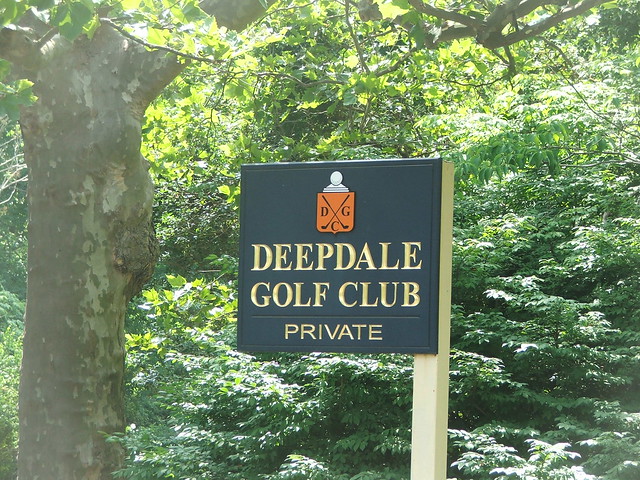
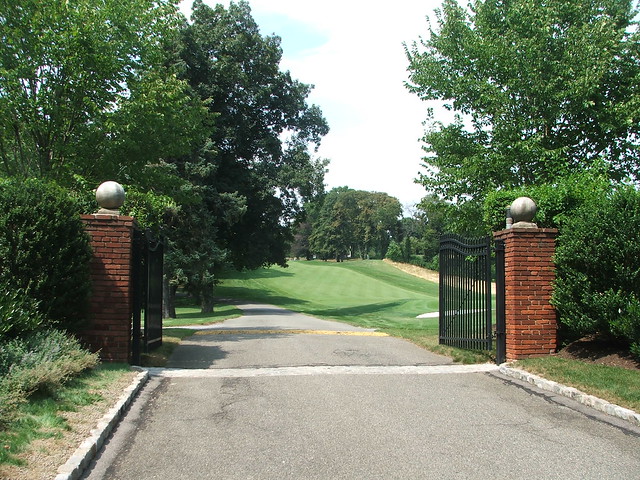
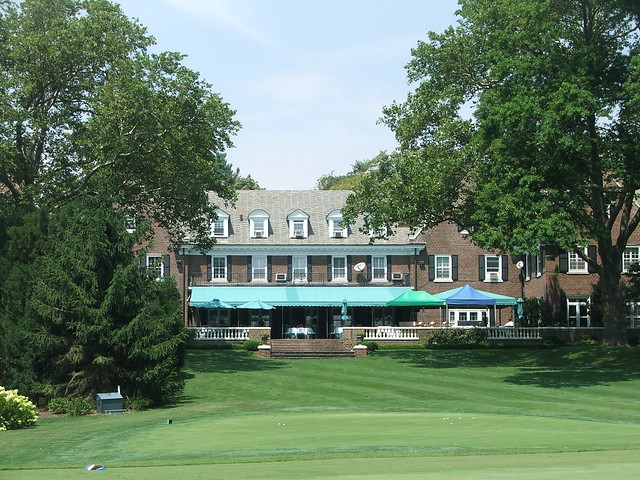
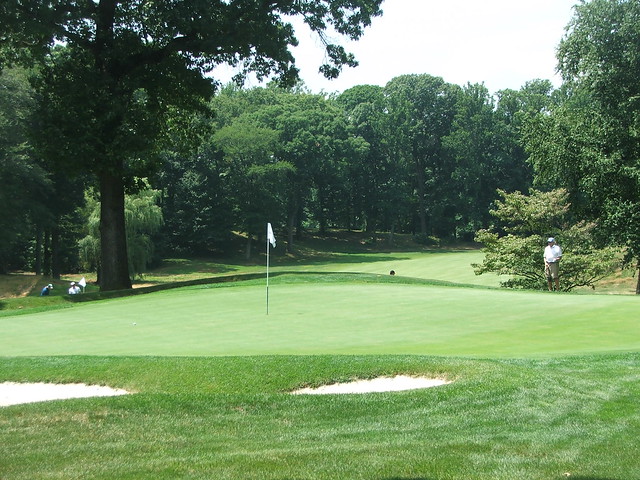
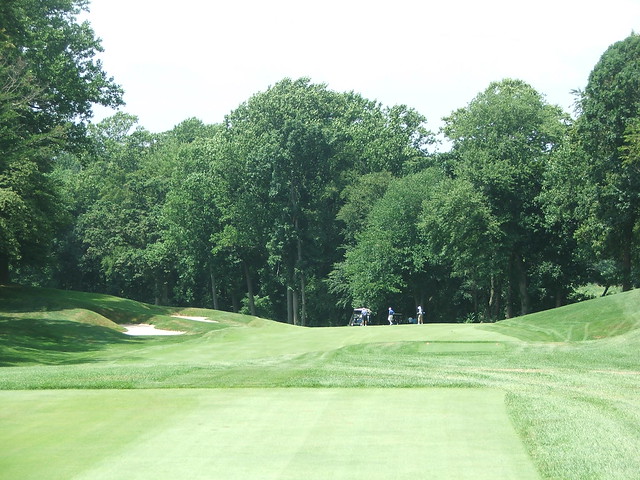
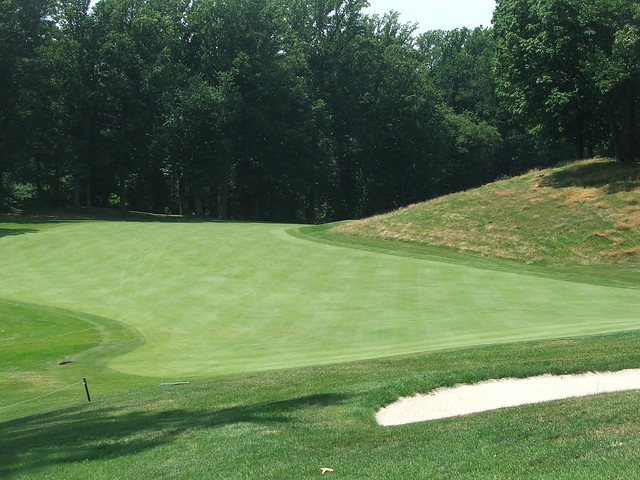
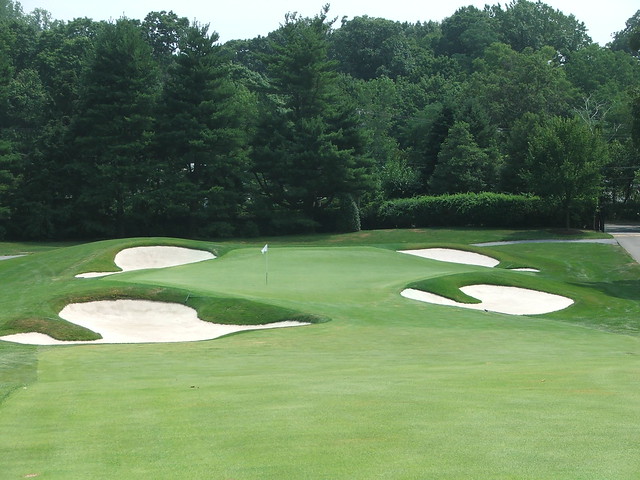
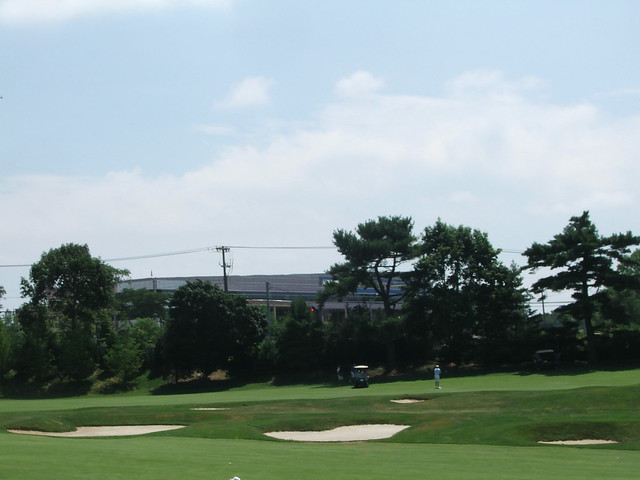
No comments:
Post a Comment